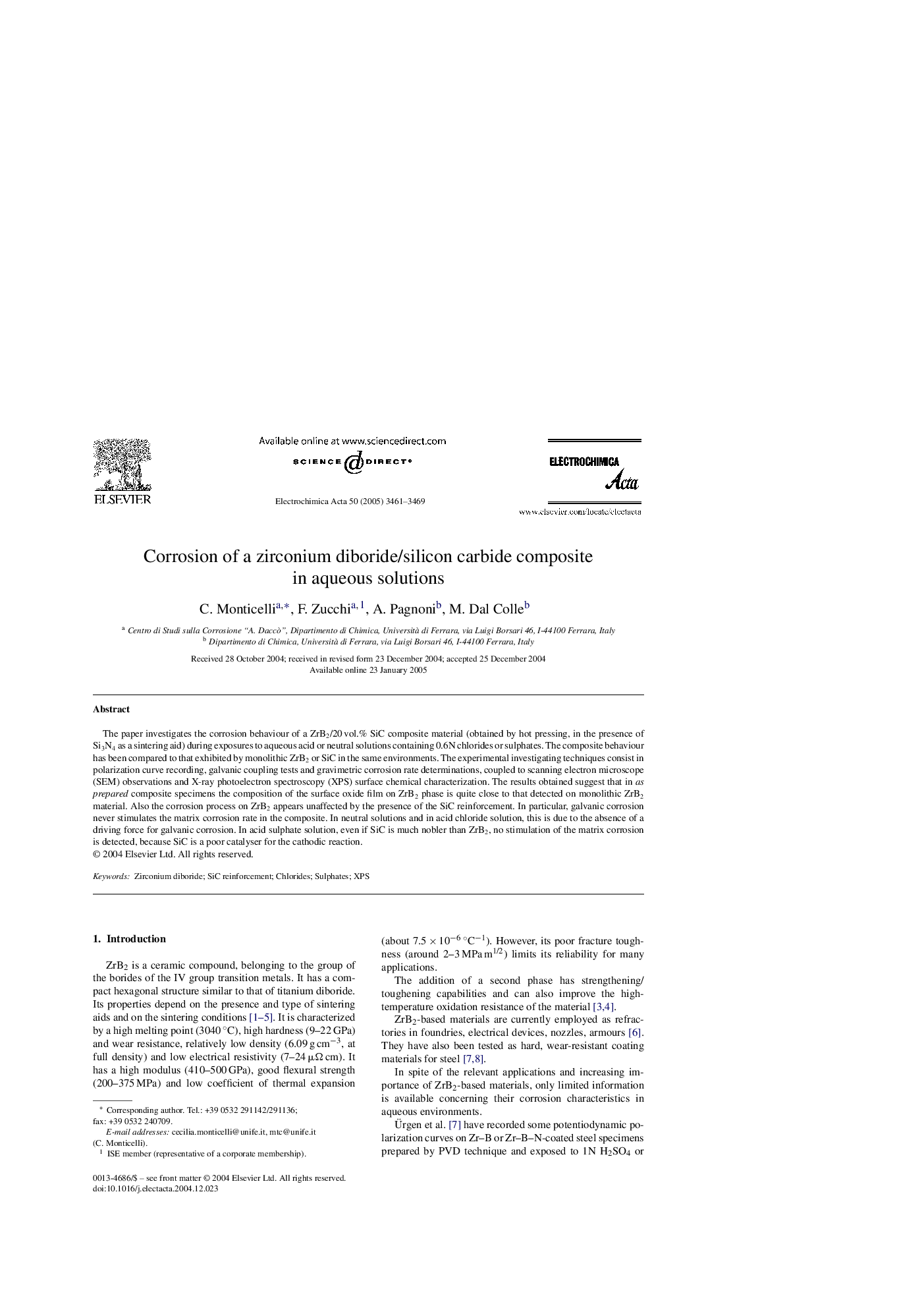| Article ID | Journal | Published Year | Pages | File Type |
|---|---|---|---|---|
| 196736 | Electrochimica Acta | 2005 | 9 Pages |
The paper investigates the corrosion behaviour of a ZrB2/20 vol.% SiC composite material (obtained by hot pressing, in the presence of Si3N4 as a sintering aid) during exposures to aqueous acid or neutral solutions containing 0.6N chlorides or sulphates. The composite behaviour has been compared to that exhibited by monolithic ZrB2 or SiC in the same environments. The experimental investigating techniques consist in polarization curve recording, galvanic coupling tests and gravimetric corrosion rate determinations, coupled to scanning electron microscope (SEM) observations and X-ray photoelectron spectroscopy (XPS) surface chemical characterization. The results obtained suggest that in as prepared composite specimens the composition of the surface oxide film on ZrB2 phase is quite close to that detected on monolithic ZrB2 material. Also the corrosion process on ZrB2 appears unaffected by the presence of the SiC reinforcement. In particular, galvanic corrosion never stimulates the matrix corrosion rate in the composite. In neutral solutions and in acid chloride solution, this is due to the absence of a driving force for galvanic corrosion. In acid sulphate solution, even if SiC is much nobler than ZrB2, no stimulation of the matrix corrosion is detected, because SiC is a poor catalyser for the cathodic reaction.
